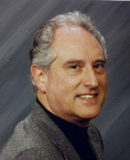Paroxysmal Dystonia -
paraoxysmal dyskinesias
The term used to describe paroxysmal dystonia is paraoxysmal dyskinesias. PD are episodic movement disorders in which abnormal movements are present only during attacks. The term paroxysmal indicates that symptoms are noticeable at certain times.
The term dyskinesia broadly refers to movements of the body that are involuntary.
Between attacks most people are generally neurologically normal, and therefore, is no loss of consciousness during the attacks.
Identifying the types of movements associated with PD is complicated. These movements may be dystonic, choreic, ballistic, or a combination. An individual may show one specific type of movement or a combination of movements.
Dystonic movements are typically patterned and repetitive, causing twisting movements and abnormal postures. Dystonic occurs when opposing muscles are contracting simultaneously. The activation of these muscles my “overflow” to other muscle groups unintentionally.
Choreic movements may be described as brief, rapid, involuntary movements that serve no purpose. When mild, choreic movements my resemble fidgeting.
Ballistic movements are more severe movements that involve portions of the limb such as the shoulder and elbow and hip and knee.
Athetoid movements are slower and more continuous than chorea with a writhing quality.
They especially involve the hand and may also affect the torso and other parts of the body.
Paroxysmal Kinesigenic Dyskinesia (PKD) may be inherited, meaning it is passed genetically from a parent or ancestor. The age of onset in inherited cases of PKD is from 5 to 15 years. PKD may also occur sporadically, meaning that symptoms manifest without a family history. The age of onset in sporadic cases is variable. In both cases the attacks, which may occur up to 100 times per day, are often precipitated by a startle, a sudden movement, a particular movement, or other factors. The attacks are usually short lasting
seconds or minutes. The symptoms may be preceded by an unusual sensation in the limbs and may be limited to one side of the body or a single limb. Most people with PKD have dystonia and some have a combination of chorea and dystonia or ballism.
Over 20 years ago, I was diagnosed with focal eyelid dystonia called Blepharospasm. It is evidenced by uncontrolled and involuntary eye closure or blinking. I went through a series of eyelid injections and the results were my eyes and the side of my face looked artificial, so I stopped getting them. Later I learned about a whole food and nutritional program that could nourish my brain and body. Within six weeks, my symptoms diminished dramatically and I no longer blinked excessively. This nutritional program helped me, maybe it could help you.
The term dyskinesia broadly refers to movements of the body that are involuntary.
Between attacks most people are generally neurologically normal, and therefore, is no loss of consciousness during the attacks.
Identifying the types of movements associated with PD is complicated. These movements may be dystonic, choreic, ballistic, or a combination. An individual may show one specific type of movement or a combination of movements.
Dystonic movements are typically patterned and repetitive, causing twisting movements and abnormal postures. Dystonic occurs when opposing muscles are contracting simultaneously. The activation of these muscles my “overflow” to other muscle groups unintentionally.
Choreic movements may be described as brief, rapid, involuntary movements that serve no purpose. When mild, choreic movements my resemble fidgeting.
Ballistic movements are more severe movements that involve portions of the limb such as the shoulder and elbow and hip and knee.
Athetoid movements are slower and more continuous than chorea with a writhing quality.
They especially involve the hand and may also affect the torso and other parts of the body.
Paroxysmal Kinesigenic Dyskinesia (PKD) may be inherited, meaning it is passed genetically from a parent or ancestor. The age of onset in inherited cases of PKD is from 5 to 15 years. PKD may also occur sporadically, meaning that symptoms manifest without a family history. The age of onset in sporadic cases is variable. In both cases the attacks, which may occur up to 100 times per day, are often precipitated by a startle, a sudden movement, a particular movement, or other factors. The attacks are usually short lasting
seconds or minutes. The symptoms may be preceded by an unusual sensation in the limbs and may be limited to one side of the body or a single limb. Most people with PKD have dystonia and some have a combination of chorea and dystonia or ballism.
Over 20 years ago, I was diagnosed with focal eyelid dystonia called Blepharospasm. It is evidenced by uncontrolled and involuntary eye closure or blinking. I went through a series of eyelid injections and the results were my eyes and the side of my face looked artificial, so I stopped getting them. Later I learned about a whole food and nutritional program that could nourish my brain and body. Within six weeks, my symptoms diminished dramatically and I no longer blinked excessively. This nutritional program helped me, maybe it could help you.
Get Help for Your Paroxysmal Dystonia
 Steve Zarren, President
Feel Better LLC
Steve Zarren, President
Feel Better LLC
If you have paroxysmal dystonia, or know someone who does, give me a call. I will share with you about how I am helping people improve their quality of life. My phone number is (410) 486-2525 or (410) 790-9606 cell phone. Call between 9:00 AM and 8:00 PM EST, seven days a week or fill out my free no obligation consultation form.
To read testimonials, click here.